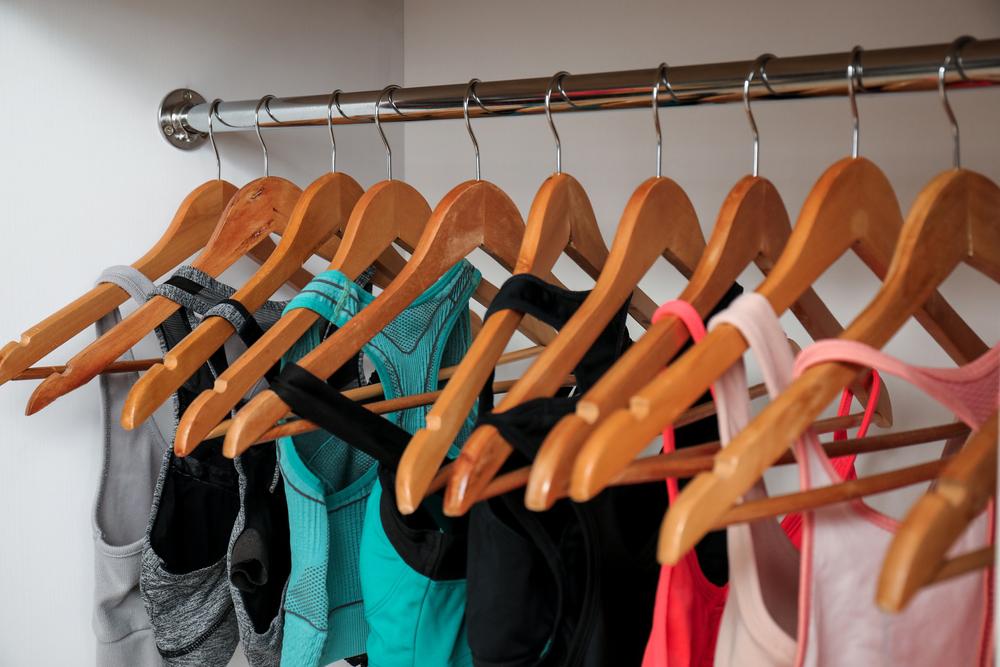 Content Warning: This article contains mentions of bullying and eating disorders.
Content Warning: This article contains mentions of bullying and eating disorders.
Body image issues in athletes can come from a wide variety of sources: certain sports value specific weights and body types more than others, athletes will deal with puberty in different ways, and some student athletes struggle with control in other areas of their lives, which can lead to body image issues and unhealthy behaviors around food and exercise.
There isn’t one specific type of young athlete who’s at risk. Anyone can struggle with body image issues, and it’s important for parents and coaches to understand the different ways that those issues can be triggered. Here, Melissa Streno, a clinical psychologist who specializes in athletic performance and its intersection with disordered eating and body image issues, explains what might make certain types of athletes more prone to dealing with destructive body image issues. She also offers tips on how you can help.
Girls have higher risk
“Historically, in terms of gender, I think we would we have seen higher numbers of females with the experience of disordered eating, eating disorders, and body image concerns and thoughts,” says Streno. For some perspective, roughly 80 percent of women in the U.S. reportedly are unhappy with the way they look, and 70 percent of ‘normal weight’ women report that they want to be thinner. Even between the ages of three and six years old, half of girls worry about ‘being fat.’
How to help: Establish an open-door, judgement-free policy as soon as possible with your team or child so they know you’re available to discuss problems. For coaches, pay close attention to behaviors around eating and watch for signs of bullying. You can also consider holding regular team-wide check-ins where you discuss issues like body image, either as a group or with the help of an expert like Streno.
But boys are not immune
“People hear eating disorder and they automatically assume that it’s a female issue,” says Streno. “But there are issues like muscle dysmorphia, which is when someone is trying to achieve a specific body type or a certain amount of muscle to look a particular way. We see a lot of that with males. Now we’re seeing a lot more men who need treatment and seek out support.”
How to help: Role model open communication habits around body image. “Historically, there has been such a bias and stigma around seeking help and that males need to be strong,” explains Streno. “There was this idea that they can fix themselves on their own, but it’s important to ensure that young men are also seeking help when they’re struggling.”
Aesthetic and weight-class sports
“In certain sports, there is lot of pressure to look a particular way. We know that all sports can predispose an athlete to developing disordered eating, but there are absolutely sports that are more focused on the aesthetics,” says Streno. These include sports like gymnastics or figure skating that have subjective scoring, as well as sports with certain weight classes, such as wrestling or boxing. It can also include team sports, such as football or cross country running, where there are certain body types associated with specific positions or the ability to be successful.
How to help: Ensure that athletes have access to solid nutritional information that addresses how they can meet their sport goals in a healthy way. Streno also suggests that coaches reduce body image concerns by choosing uniforms that are more comfortable and offering a wider range of options.
Athletes going through puberty
As hormones begin to shift and their bodies begin to change, athletes are more prone to experience body image issues, and this can start as young as eight years old. “Puberty hits at different rates for males and females, and at different times,” says Streno. “It’s so confusing for somebody to have their body changing outside the sport context, especially when they believe they are supposed to be maintaining a particular body image for their sport.”
How to help: Explain what to expect and what your athletes are going through. Most young people are confused by puberty and you can help by providing information about why and how their bodies are changing — and how they’ll be able to improve athletically because of it. For parents, be aware of how you talk about food and nutrition, especially during this time. Try not to comment on a child’s weight, shape, or size – and don’t compare them to anyone else. Empower kids by role modeling and encouraging self-talk that is kind and respectful.
Athletes with perfectionist tendencies
Unfortunately, the traits that can make an athlete great can also contribute negatively to their body image and lead to disordered eating. “When you think about perfectionism and orderliness and compulsivity, that predisposes some of these athletes to be rigid about the way they look in their uniforms, what they eat, and how much they work out in order to influence their body image,” says Streno.
How to help: Watch your language. “As a coach or parent, be aware of what you’re saying about your body and how you’re treating your body. Kids are sponges and absorb everything that you say,” explains Streno. She urges parents and coaches to avoid talking about anything around body image, physical appearance, physique, food control, and discipline around eating. Seek out positive role models for your athletes, whether it’s professional athletes who are focused on spreading messages around body positivity, experts in sports nutrition, or even team alumni who are doing well in their careers now.
Athletes struggling in other areas
Unfortunately, many young athletes struggle with a lack of control in most areas of their lives, and their bodies can become the one ‘controllable’ component. “We see athletes start to struggle with this a lot when things are changing or they’re having issues in other areas of their life,” says Streno. “They use their bodies to maintain some form of control, whether it’s restricting eating, over-exercising, or beginning the binge-purge cycle. They want to feel like they have some control when everything else in their life is changing, sports-related or not.”
How to help: Start by offering emotional support, not advice, and seek help for your athlete from an expert. Lastly, don’t normalize body image issues as ‘part of sport,’ warns Streno. Negative body image can lead to increased risk for depression, anxiety, and even suicidal tendencies. Often, there are underlying issues, and to promote the idea that it’s part of the game can be damaging to the athlete and keep them from getting help in another area of life where it’s gravely needed.
Takeaway
While awareness of body composition and body image is inevitable, there are some risk factors that contribute to the likelihood of negative body image issues. That’s why it’s important for parents and coaches to employ healthy communication and behaviors around body image.



